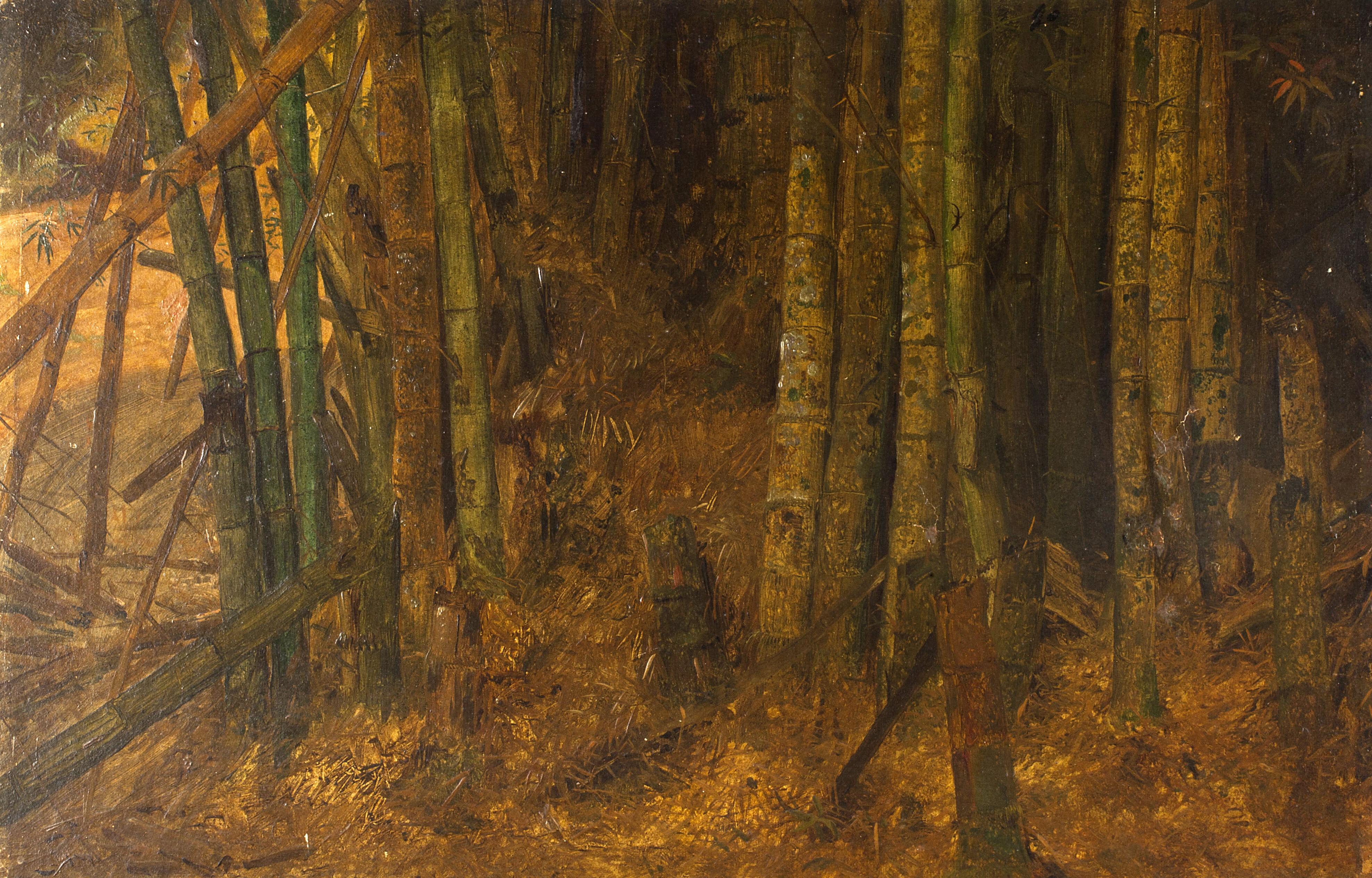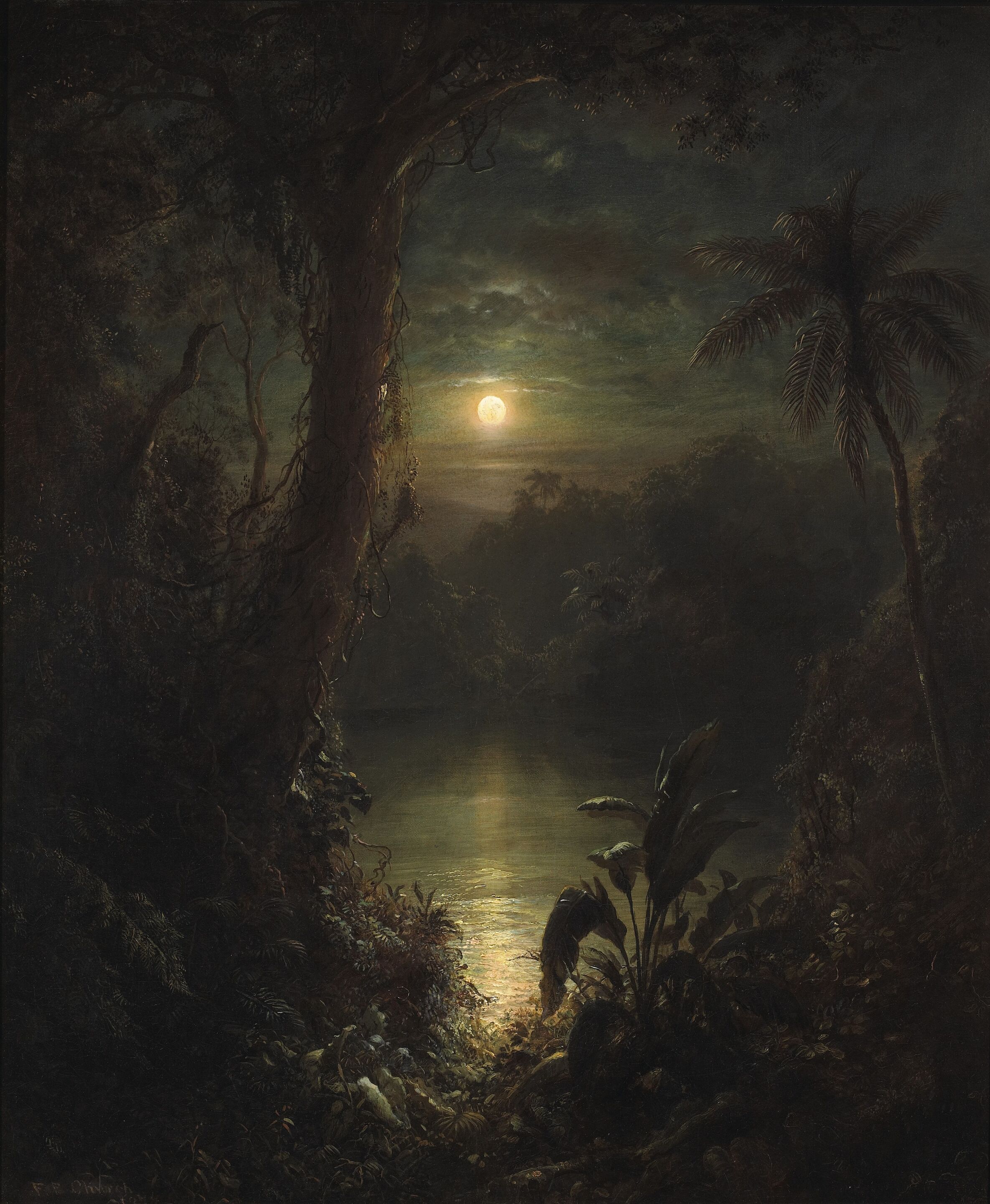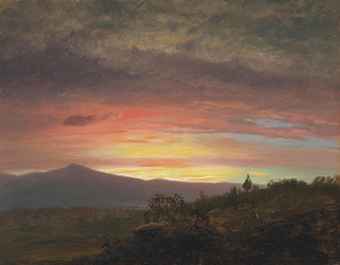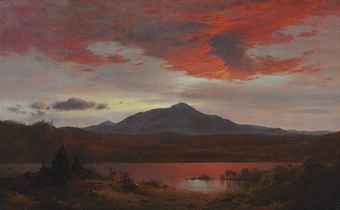Frederic Edwin Church was born in Hartford, Connecticut, on May 4, 1826, the only son of a wealthy businessman. Although his father hoped he would become a physician or enter the world of business, Church persisted in his early desire to be a painter. In 1842-1843 he studied in Hartford with Alexander H. Emmons (1816-1879), a local landscape and portrait painter, and Benjamin H. Coe (1799-after 1883), a well-known drawing instructor. In 1844 Church's father, at last resigned to his son's choice of a career, arranged through his friend, the art patron Daniel Wadsworth, two years of study with Thomas Cole. Church was thus the first pupil accepted by America's leading landscape painter, a distinction that immediately gave him an advantage over other aspiring painters of his generation.
From the first, Church showed a remarkable talent for drawing and a strong inclination to paint in a crisp, tightly focused style. In 1845 he made his debut at the annual exhibition of the National Academy of Design in New York, where he would continue to show throughout his career. Two years later four of his paintings were shown at the American Art-Union, and by that point he was established in New York as one of the most promising younger painters. In 1849, at the age of twenty-three, he was elected to full membership in the National Academy, the youngest person ever so honored.
During the late 1840s and early 1850s Church experimented with a variety of subjects, ranging from recognizable views of American scenery, to highly charged scenes of natural drama, to imaginary creations based on biblical and literary sources and much indebted to Cole. Gradually, however, he began to specialize in ambitious works that combined carefully studied details from nature in idealized compositions that had a grandeur and seriousness beyond the usual efforts of his contemporaries. Church traveled widely in search of subjects, first throughout the northern United States and then, in 1853, to South America. Inspired by the writings of the great German naturalist Alexander von Humboldt, he spent five months in Colombia and Ecuador. His first full-scale masterpiece, The Andes of Ecuador (1855; Reynolda House Museum of American Art, Winston-Salem), was a four-by-six-foot canvas depicting a vast tropical mountain panorama that astounded viewers with its combination of precise foreground detail and sweeping space.
Two years later Church's reputation as America's most prominent landscape painter was secured with the exhibition in New York, London and other cities of Niagara (1857; Corcoran Gallery of Art, Washington) in New York. A second trip to South America took place that same year and resulted two years later in his most famous painting of the tropics, Heart of the Andes (1859; The Metropolitan Museum of Art, New York).
Sotheby's 2014
FREDERIC EDWIN CHURCH
1826 - 1900
1826 - 1900
SOUTH AMERICAN LANDSCAPE (STUDY FOR CHIMBORAZO)
Estimate
300,000 — 500,000
Sotheby's 2013
FREDERIC EDWIN CHURCH
1826 - 1900
1826 - 1900
FINAL STUDY FOR THE ICEBERGS
LOT SOLD. 905,000
Bonhams 2013
FREDERIC EDWIN CHURCH
(American, 1826-1900)
A study of bamboo
11 3/4 x 17 7/8in
Sold for US$ 27,500Bonhams 2009
Frederic Edwin Church (American, 1826-1900)
Twilight in the Tropics (A tropical moonlight)
30 x 25 1/4in
Sold for US$ 1,274,000
Christie's 2012
Christie's 1998







